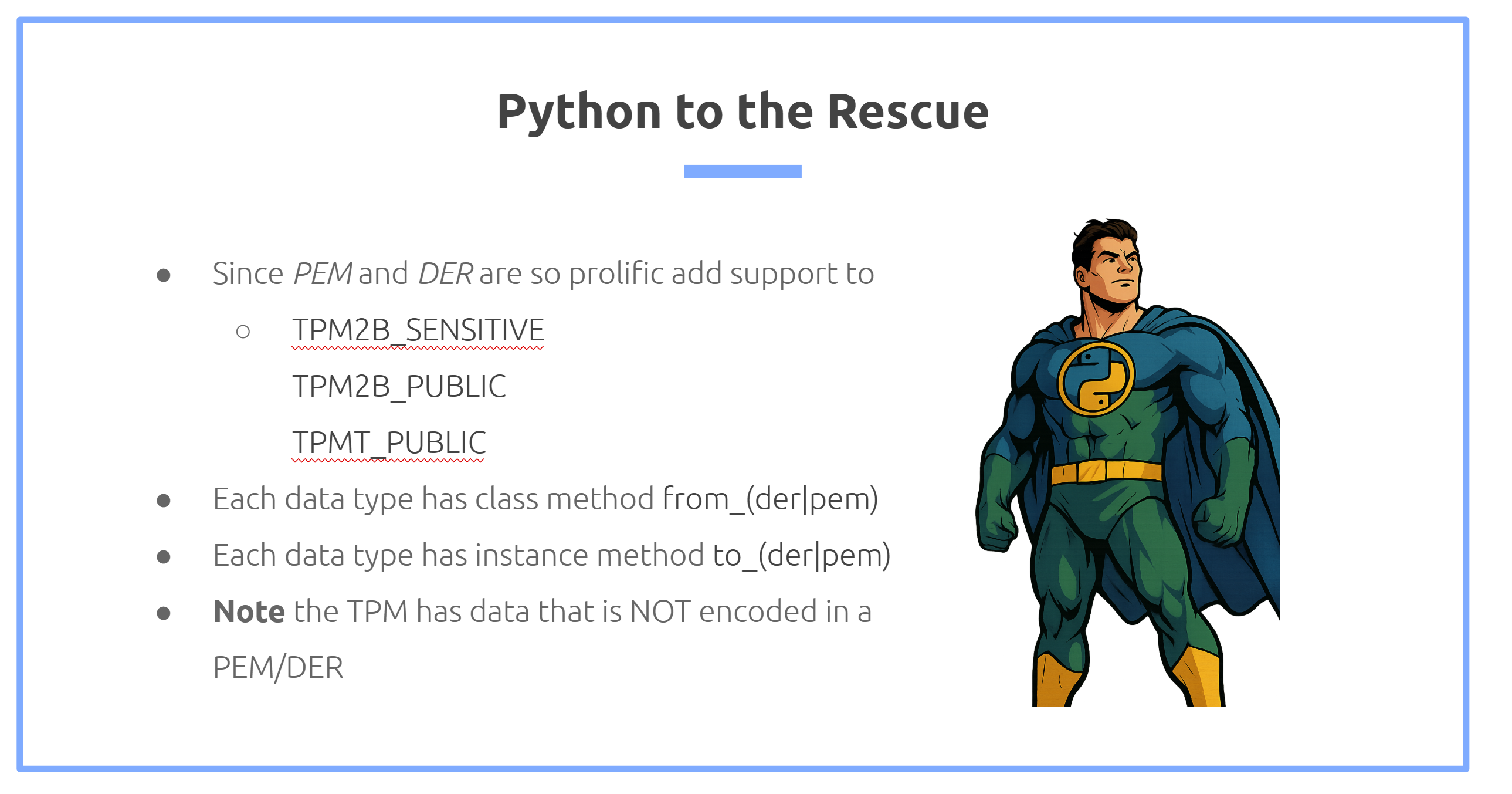About This Course
This course provides a comprehensive introduction to Trusted Platform Module (TPM) 2.0 programming using the Python-based tpm2-pytss library. Designed for developers, security engineers, and researchers, the course covers both foundational TPM 2.0 concepts and practical hands-on development techniques for interacting with TPM hardware and simulators.
Students will learn the architecture and security goals of TPM 2.0, the structure of TPM objects, and how to work with cryptographic keys, non-volatile storage, platform configuration registers (PCRs), and authorization policies. Through the use of the tpm2-pytss library, participants will develop Python applications that interface with the TPM to perform tasks such as key provisioning, sealing and unsealing secrets, attestation, and policy-based access control.
Some topics covered in the course are:
- Enhanced System API aka ESAPI in Python
- Feature API aka FAPI in Python
- Creating Keys and other TPM 2.0 Objects using FAPI and ESAPI
- Using PCRs
- Encrypted Sessions to protect traffic from hackers
- Audit Sessions
- HMAC Sessions for protecting passwords and providing integrity
- tpm2-pytss bindings to libpolicy for flexible JSON based polcies
- Credential Activation process even without TPMs
- Object Protections and using them to send keys from remote servers
- Handling Endoresement Keys
- Serializing and Deserializing TPM data structurs
- Converting native TPM 2.0 Key formats to PEM and DER
- Writing Custom TCTIs in Python
- Conclusionary video covering lessons learned and mistakes made by the author


